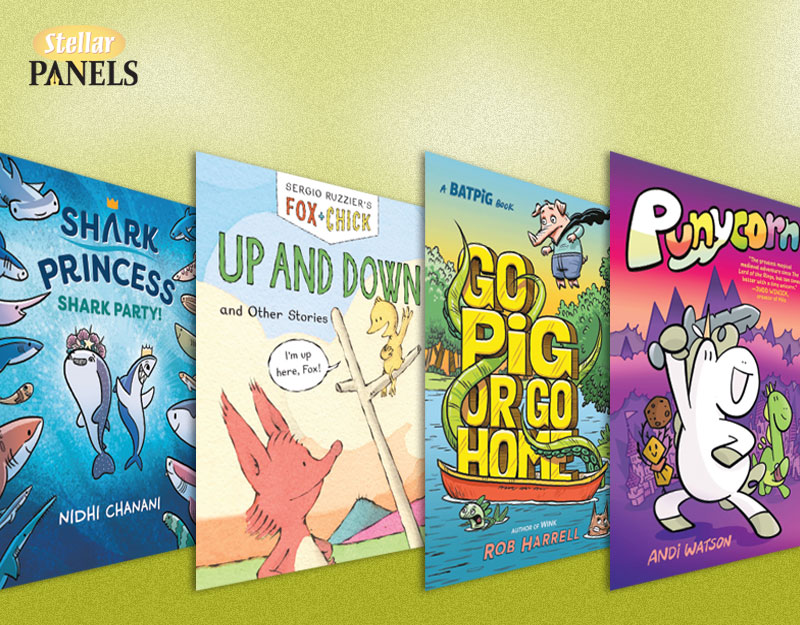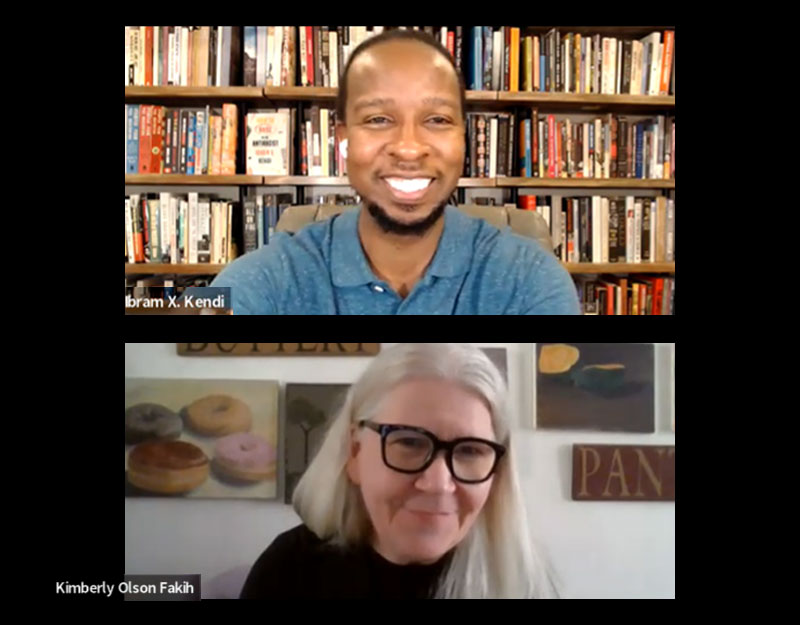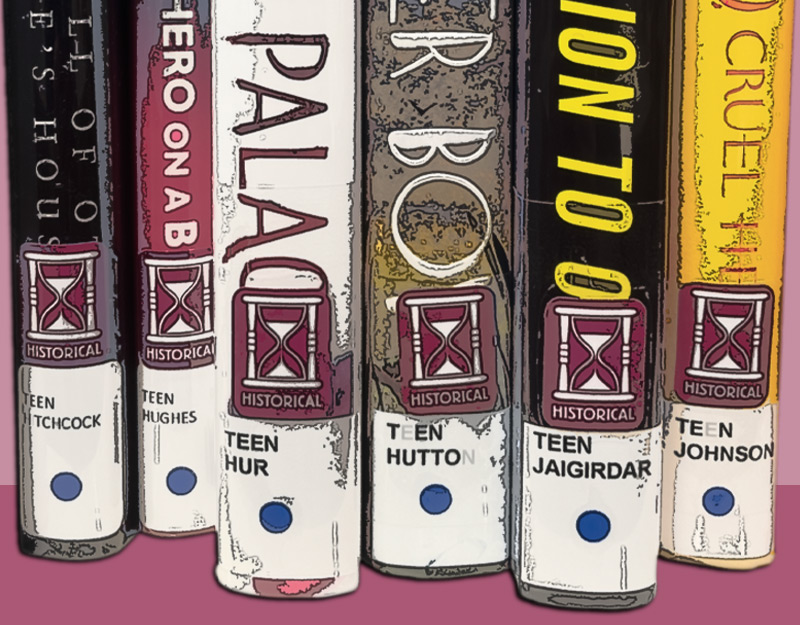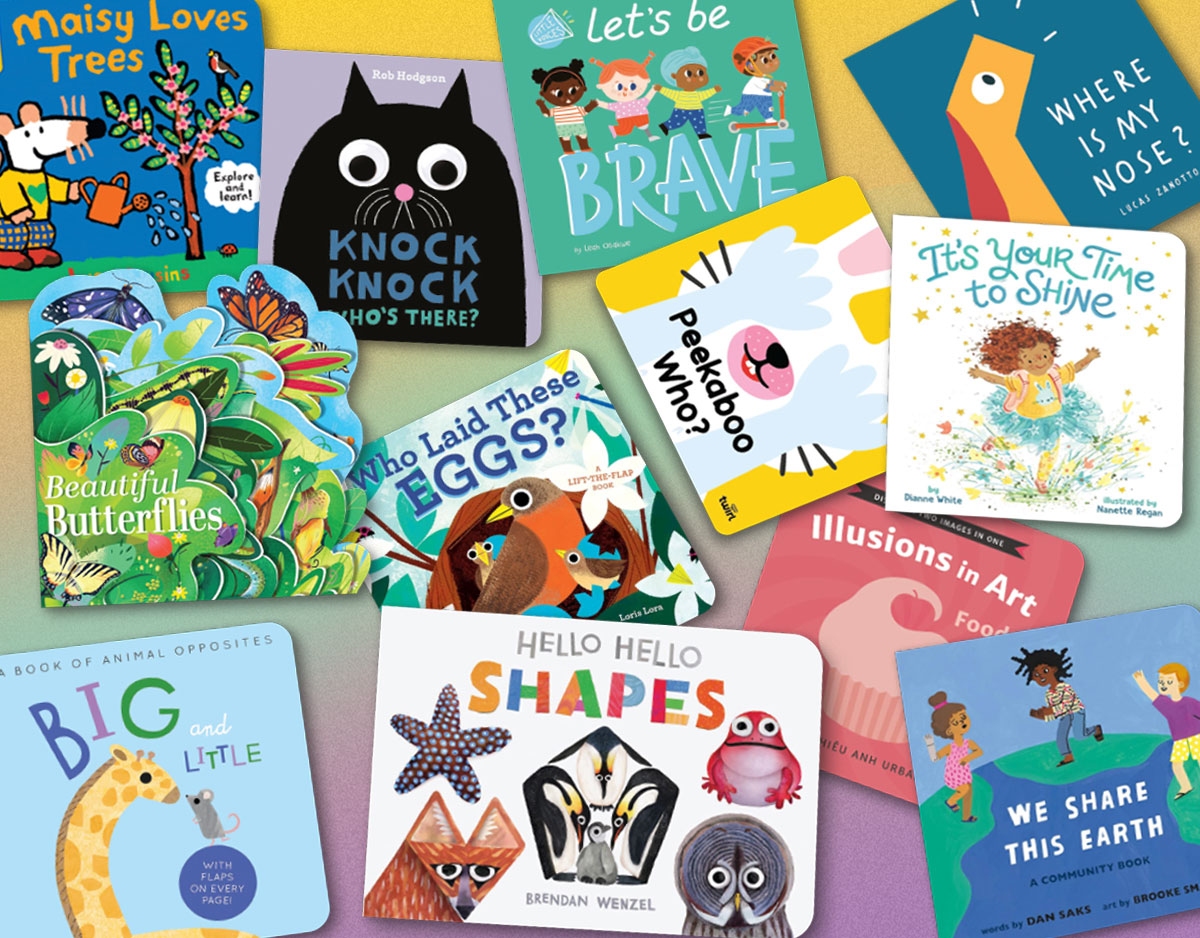Lesser Spotted Animals
 Lesser Spotted Animals: The Coolest Creatures You’ve Never Heard Of
Lesser Spotted Animals: The Coolest Creatures You’ve Never Heard Of
Written and illustrated by Martin Brown
Published by Scholastic, 2016 (release date Dec. 27, 2016)
ISBN #978-1-338-08934-9
Grades 2 and up
Book Review
“Those big shots have hogged the stage too long.” Indeed, as the introduction to this book declares, it’s time for some of the other thousands of different animals that roam the earth to be in the limelight. In Martin Brown’s nonfiction picture book, Lesser Spotted Animals, twenty-one animals most of us have never heard of take center stage. From the Cuban solenodon to the Speke’s pectinator to the banded linsang, Brown introduces us to animals big and small, nocturnal and diurnal, tree climbers, desert dwellers, and water inhabitants. There is the hirola, which “is also known as Hunter’s hartebeest, named after Henry Charles Vicars Hunter, who was . . . a hunter.” There is also the zorilla: “If you thought skunks were smelly, you’d be right. . . . But skunks aren’t the skunkiest animals around. That award goes to the zorilla.” Each animal gets its turn with an informative, entertaining double-page spread that includes a box of serious facts and then a few paragraphs of cheeky description that are sure to elicit a chuckle or two from young readers. Brown’s cartoonish, yet detailed illustrations mirror the balancing of fact and humor in his text. To underscore the absence of these animals from most informational books about animals, Brown also depicts many of them as though they are truly and finally being forced to step into the spotlight: the lesser fairy armadillo attempts to back off the page, the long-tailed dunnart peevishly glances up at having his (rather gruesome) dinner interrupted, while the black-footed ferret self-consciously waves its foot. Threaded throughout the diversions, however, is a solemn reminder of the “status” of each animal, ranging from endangered to “data deficient” as to whether they are prospering as a species. There is a reason, after all, as to why these animals are rarely seen. A glossary is included at the end. For animal lovers, environmentalists, and fans of informational books alike, Lesser Spotted Animals is certainly a standout.
Teaching Ideas and Invitations
Grades 2 and up
- More about the Animals. Have students select an animal featured in the book to research further. Begin by having them brainstorm questions that the book doesn’t answer, or that it answers for some animals but not others. Encourage students to seek help from their school or local librarians to utilize a variety of print and online resources. Have students present their findings in a multimedia presentation.
- Other Lesser Spotted Animals. Using Brown’s picture book as a mentor text, have students create a class book about other rare animals not featured in Lesser Spotted Animals. Have them first study Brown’s picture book to note the kinds of content, text features, layout, and front and back matter. Make sure they also attend to the kinds of illustrations Brown includes. Once the book has been analyzed in this way, guide students through the writing process to construct their book. Display the book in class or in the school library to share with other students.
- Endangered Animals Text Set. With the help of your school or local librarian, gather a set of books about endangered animals. Some recommended titles are listed below in the Further Explorations section. Construct a text set to explore the notion of animal endangerment broadly or specifically according to a particular factor, such as human impact or habitat destruction. Discuss with students the ways in which the books portray the animals and their status as endangered. What perspectives are included and excluded? What factors are mentioned? What solutions or actions are offered to stem or reverse the loss of more animals? What solutions or actions might your students contribute to as a class project?
- Ecosystems. Though some are few in number, each animal plays a critical role in its ecosystem. Have students work in small groups to research more information about a particular animal’s natural habitat and the ecosystems existing there. To introduce the complexity of ecosystems, you might want to first share Jean Craighead George’s picture book The Wolves are Back or Dorothy Hinshaw Patent’s When the Wolves Returned, both of which chronicle the near disastrous consequences of eliminating an animal species from an ecosystem and the fortunes that returned when it was reintroduced into its natural habitat. Have students create a visual display that charts the animal’s interdependent role in its habitat. As an extension, invite them to study their the ecosystems in their own communities and geographical region.
- Endangered Species Act. The Endangered Species Act, passed in 1973, was designed to stop and reverse the trend toward animal extinction and its negative impact on our environment and ecosystems. Explore the U.S. Fish and Wildlife Services and the National Oceanic and Atmospheric Administration website listed below to learn more about the Act. What are its challenges and its accomplishments? Share some of the books listed below in Further Explorations to help students gain a deeper understanding of the complexities and stakes involved in animal endangerment and extinction. For example, who benefits and who loses if stricter regulations are in place about certain animal species? Invite your students to write and submit opinion pieces about the Act to a local community publication.
- Humor in Nonfiction. Children tend to delight in humorous fictional stories, but how often do they encounter humor in nonfiction texts? Gather a set of humorous children’s nonfiction, such as Nicola Davies’ Extreme Animals; April Pulley Sayre’s Ant, Ant, Ant: An Insect Chant; and Susan E. Goodman’s See How They Run. Have them analyze what elements contribute to each book’s humor. Is it the topic? The word choice? The illustrations? The captions or dialogue? A combination of elements? Once your students have discussed this and looked at enough examples, have them try their hand at writing humorous nonfiction. You might have them write an original piece or rewrite a nonfiction text using what they have learned from their analysis.
- Author-Illustrator Study. Assemble a collection of Martin Brown’s work and biographical information. Read through his books as a class, noting similarities and differences across the books’ formats and styles. Study his writing techniques, noting his word choices and use of figurative language. Ask your students to identify patterns in topic, setting, theme, character, and plot across the books. Compile a list of lessons about writing that they have gained from this author study, and invite your students to try out some of them in their own writing. Have them do the same with Brown’s illustrations. What styles, media, and techniques does he employ? What themes or symbols do they see across his illustrations? Gather information from the websites listed below, your local librarian, the Internet, and as other biographical sources.
Grades 5 and up
- Idiomatic Phrases. Introduce students to idioms. For your older students, you might want to stress the difference between an idiom (a phrase that means something different from its literal words but offers vivid imagery and insight into the rest of the text) and a cliché (an idiom that is overused to the point that it’s lost any freshness or impact). What makes them effective? What makes them striking or fresh? How much is too much when it comes to writing with idioms? Guide them to study the context in which those idioms are voiced to determine what they mean. Then have students brainstorm the various idioms they hear in everyday life. Help them research the meanings of those idioms, research their origins, and discuss the perspectives and values underlying the expressions. They may be surprised to learn that a seemingly benign and popularly used idiom may have controversial origins. Then challenge students to try writing a piece with idioms, making sure to strike a good balance of use that adds freshness and impact to their writing.
Critical Literacy
- Animals on the Margins. Aside from being rarely seen, have students discuss why these animals aren’t given more attention in children’s literature or nonfiction texts. Does the fact that many of them are rare and endangered suffice? What kinds of animals get popular attention? Why? Consider the usefulness of the animal to humans, as well as the attractiveness of the animal. What do the answers to these questions tell you about the “objectivity” of nonfiction?
Further Explorations
Online Resources
Websites about Martin Brown
http://www.davidhigham.co.uk/authors-dh/martin-brown/
http://www2.le.ac.uk/offices/english-association/sigs/childrens-literature/authors/martin-brown
http://horrible-histories.co.uk/awesome-author-and-illustrator#martinquestions
Animal Activist Websites
Animal Hero Kids
Friends of Animals
https://www.friendsofanimals.org/programs/animal-rights/just-kids
PETA Kids
The Humane Society
http://www.humanesociety.org/parents_educators/
National Wildlife Federation
Defenders of Wildlife Kids’ Planet
Environmental Protection Agency: Plants, Animals, and Ecosystems
https://www3.epa.gov/climatechange/kids/impacts/effects/ecosystems.html
World Wildlife Federation
Rare and Endangered Animals Websites
Endangered Species Act
http://www.nwf.org/wildlife/wildlife-conservation/endangered-species-act.aspx
http://www.nmfs.noaa.gov/pr/laws/esa/
U.S. Fish and Wildlife Service: Endangered Species
https://www.fws.gov/endangered/
World Wildlife Federation: Endangered Species Directory
https://www.worldwildlife.org/species/directory?direction=desc&sort=extinction_status
Animal Planet: Endangered Species
http://www.animalplanet.com/wild-animals/endangered-species/
National Geographic: Ten of the Rarest Animals on Earth
National Park Service: Endangered Animals
http://nature.nps.gov/biology/endangeredspecies/
National Parks Conservation Association: Meet 9 Endangered National Park Animals
https://www.npca.org/articles/352-meet-9-endangered-national-park-animals
National Park Reservations: Endangered Species in Our National Parks
https://www.nationalparkreservations.com/endangered-species-in-our-national-parks/
Books
Burns, L. (2014). Handle with care: An unusual butterfly journey. Minneapolis, MN: Millbrook Press. See our Classroom Bookshelf entry.
Carle, E., et al. (2014). What’s your favorite animal? New York: Henry Holt. See our Classroom Bookshelf entry.
Cotton, K. (2015). Counting lions: Portraits from the wild. Somerville, MA: Candlewick.
George, J.C. (2008). The wolves are back. Ill. by W. Minor. New York: Dutton.
Jenkins, M. (2011). Can we save the tiger? Somerville, MA: Candlewick.
Jenkins, S. (2006). Almost gone: The world’s rarest animals. New York: HarperCollins
Markle, S. (2013). The case of the vanishing honeybees: A scientific mystery. Millbrook Press. See our Classroom Bookshelf entry.
Montgomery, S. (2010). Kakapo rescue: Saving the world’s strangest parrot. Ill. by N. Bishop. Boston: Houghton Mifflin. See our Classroom Bookshelf entry.
Patent, D. H. (2008). When the wolves returned: Restoring nature’s balance in Yellowstone. Walker Children’s.
Rabinowitz, A. (2000). Jaguar: One man’s struggle to establish the world’s first jaguar preserve. (2nd ed.). Island Press.
Roth, S.(2013). Parrots over Puerto Rico. New York, NY: Lee and Low Books. See our Classroom Bookshelf entry.
Sayre, A.P. (2013). Here come the humpbacks! Watertown, MA: Charlesbridge. See our Classroom Bookshelf entry.
Stewart, M., & Young, A. (2013). No monkeys, no chocolate. Ill. by N. Wong. Watertown, MA: Charlesbridge. See our Classroom Bookshelf entry.
Filed under: Nonfiction, Nonfiction Picture Books
About Grace Enriquez
Grace is an associate professor of language and literacy at Lesley University. A former English Language Arts teacher, reading specialist, and literacy consultant, she teaches and writes about children’s literature, critical literacies, and literacies and embodiment. Grace is co-author of The Reading Turn-Around and co-editor of Literacies, Learning, and the Body.
ADVERTISEMENT
ADVERTISEMENT
SLJ Blog Network
Zachariah OHora on PBS
Cover Reveal and Q&A: Dusti Bowling’s Latest – The Beat I Drum (Apr 2025)
Girlmode | Review
The Seven Bills That Will Safeguard the Future of School Librarianship
Introducing: Heather Cox Richardson, putting the past and present together in context
Gayle Forman Visits The Yarn!
ADVERTISEMENT







